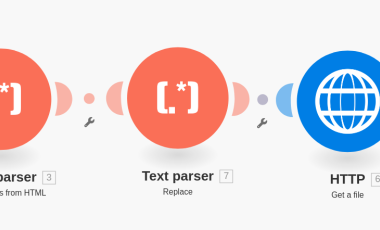Native Apps vs Responsive Ecommerce Site: What Works Best?
Next time you’re in a crowded location, count out ten people. Eight of them will have used a mobile device for online shopping, and at least three will do all their online shopping solely on that mobile device1. If you’re an e-commerce store owner, the eight are great news. However, those three might be giving you some anxiety because you’re not sure the best way to reach them.
You’ve heard about the promise of mobile apps and the benefits of a responsive website but aren’t sure where to put your development dollars. Not to worry, we’ll look at the core features of each and give you some suggestions that’ll make the choice a bit easier based on your brand and target markets.
What’s Up with Native Apps?
You’re probably familiar with apps on your phone, whether they’re called mobile or native apps. A native app is one that was built specifically for an operating system and sometimes is adjusted for an individual device. Such development enables the app to use the specific hardware and features of the mobile device, like its accelerometer, GPS, email, social apps, camera, and more.
For an e-commerce brand, an app can be both an online store and a way to view a customer account. Your user will fire up the app and have access to their order history, current order status, and be able to shop your store, among other things. It can be anything from Amazon’s app to your local veterinarian’s app that allows you to refill your pooch’s flea prevention with just a click.
The wonderful thing about an app is that you can completely control it. You get to set up the entire user interface, options, notifications it delivers, and so much more. Because an app is downloaded and tied to a specific account, it means you can collect a lot of customer data and show that individual user the offers and coupons most relevant to them.
Personalization is at the heart of this interaction, which could increase your chance of sales. The other major benefit is that apps can automatically deliver information to your users, such as deals. Notifications are easy to view, and a single click gets them right to your content. Plus, if you combine this with email marketing, you get multiple chances to reach someone with a personalized offer.
The big downside with an app is that you must create multiple versions for different operating systems, and sometimes different phones. There’s a whole lot of testing, and it is continuous. You must ensure the app works on all platforms whenever you make an update and review it across impacted devices whenever there is an update to a major operating system.
Two requirements for an app to be successful are:
- It has to work whenever the user clicks, and
- You have to make a compelling enough offer that they open your app consistently.
Does a Responsive Website Make Sense?
Responsive design is among the most favored design styles right now because it allows you to create once for any screen size. In this architecture, your website automatically arranges itself based on the width of the browser. It prioritizes content and moves things around when you’re working on a mobile device and makes the layout appear as clean and useful as possible.
The great news here is that this is automatic once your site is live. You use rules to define how this all reacts, and the site takes care of the rest. It allows you to build once for use on any browser of any size. It’ll even respond when someone on a PC has their browser window maximized or smaller.
Dynamic movements can be difficult to plan out, so there’s plenty of testing before your site goes live. The good news is that you don’t have to do much testing and reconfiguring once you’re happy with it. The main testing elements are when you decide to incorporate additional content, plugins, or pages with your website — you want to make sure that new chatbot doesn’t block photos on the mobile version while also isn’t too small to be seen on a desktop browser.
For today’s apps, there are a variety of plugins that you can use for things like shopping carts. However, in general terms, it will usually be easier for you to add new features and support for third-party tools on a website because there’s less custom code.
Shoppers will appreciate the fact that they don’t have to download a specific app to see your content and that they can buy however they want. If they see something on their phone but aren’t comfortable using a credit card on it, they can simply navigate to your site on their laptop and make a purchase.
If you’ve got customer accounts where they can sign in and save a shopping cart or items to a wish list, you’ve just made it that much easier to make a purchase on a preferred platform.
The major downside for a website is that it isn’t as interactive as an app and you can’t always support things like gestures or advancement movements through the accelerometer. You’ll also have to get people to sign up for emails to broadcast to reach them; there’s no inherent messaging like you get on an app.
How Do You Pick What’s Best?
Two factors guide the decision for a responsive website or an app: money and audience.
If you can afford the development of a custom app, and you have an audience that has demonstrated a desire to shop on an app, then that’s definitely a good reason to go for it. The cost for developing your own app will depend on your requirements.
Beyond that initial cost, there’s another thing to consider about your app: not everyone is going to download it. If one of your brand’s core cultural aspects is exclusivity, then that’s great. If not, you’ll have to get a website anyway, and it’ll most likely be responsive.
Responsive websites are relatively inexpensive and, today, there are plenty of tools and services you can use from third parties to do things like improve your shopping cart, add lookbooks, link to CRM and order management tools, and much more. For your app, some partners have APIs that you can use, but you’ve got more custom development here too.
A responsive website is always a must-have in today’s environment. A great app is a perfect way to maximize sales through direct personalization if you can afford that development pricing and have a hungry audience.
Reference 1. https://www.statista.com/topics/1185/mobile-commerce/



